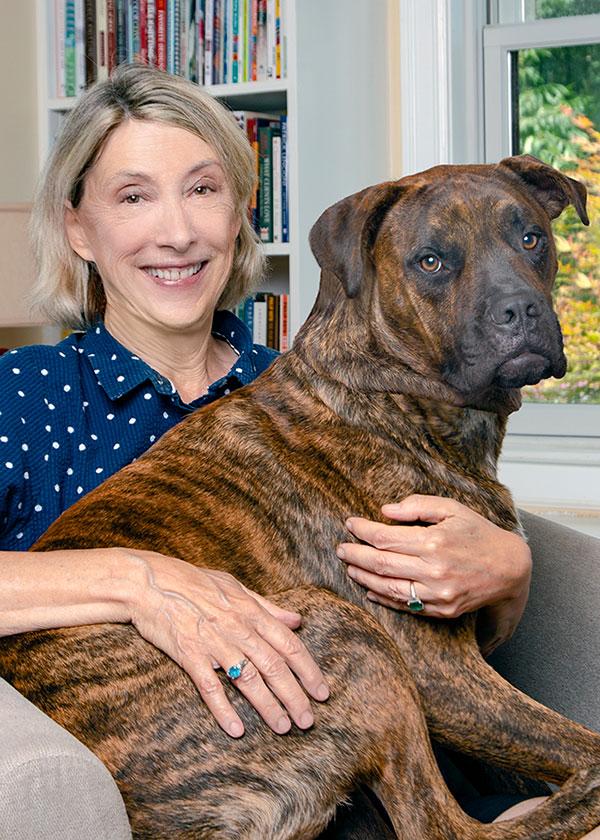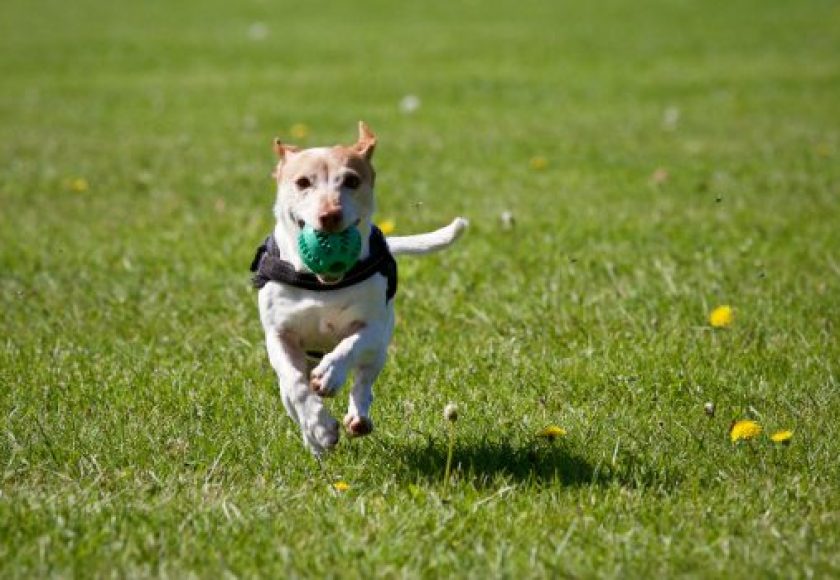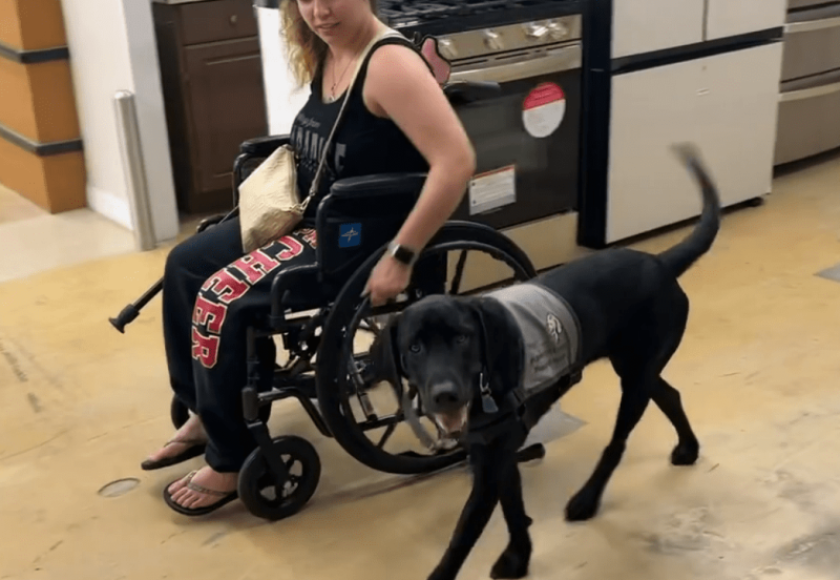Raising a service dog puppy is a heartwarming and life-changing experience. It’s also a journey filled with growth—for the pup and the puppy raiser. One of the more surprising—and sometimes challenging—chapters in that journey is the teenage phase of puppyhood.
If you’re starting to notice a shift in your sweet, eager-to-please puppy’s behavior, you’re not imagining things. Just like human teenagers, adolescent dogs go through a developmental period where they test boundaries, become more independent, and experience a flood of energy and curiosity.
At Putnam Service Dogs, we prepare our puppy raisers for this period with hands-on guidance, because it’s an essential part of raising a future service dog.
What Is the Teenage Period for Dogs?
The teenage phase in dogs typically begins around 6 months of age and can last up to 18 months, depending on the breed and individual temperament. During this time, puppies are no longer tiny babies, but they’re not fully mature either. Their bodies may look grown-up, but their brains are still catching up.
For service dogs in training, this is a critical time for reinforcing core behaviors, building resilience, and deepening the bond between the dog and the puppy raiser.
Common Teenage Dog Behaviors to Expect
Understanding what’s normal can make the teenage stage feel less overwhelming and more manageable.
Signs of Teenage Behavior in Dogs
- Selective Listening – Your pup may “forget” familiar commands.
- High Energy Levels – Zoomies, play biting, and restlessness may increase.
- Boundary Testing – Jumping, leash pulling, and barking can emerge.
- Independence Seeking – Pups may become less clingy and more curious.
- Regression in Training – Temporary setbacks in house training or manners.
This behavior doesn’t mean your pup isn’t cut out to be a service dog—it means they’re growing up.
Why the Teenage Period Is Crucial for Service Dog Training
Building Resilience and Self-Regulation
Though it can be a trying phase, adolescence is a valuable stage in a future service dog’s development. It’s a time when pups start forming deeper patterns of behavior and learning how to handle challenges and distractions. During this phase, your service dog in training begins to develop impulse control, build confidence in unfamiliar environments, and strengthen their ability to stay focused on their handler—despite the excitement around them.
Experiencing (and overcoming) the typical ups and downs of this age helps dogs become more resilient and adaptable. These qualities are essential for a successful service dog, who will one day need to perform calmly and reliably under a variety of real-world circumstances.
Training Tips for Adolescent Service Dogs
The adolescent stage can feel like two steps forward, one step back—but it’s also an incredible opportunity to strengthen your bond with your pup and build their emotional resilience.
Here are a few practical tips to help you—and your pup—thrive during this important stage.
- Stay Consistent – Stick with your routines and reinforce expected behavior.
- Reward Good Behavior – Use positive reinforcement to build habits.
- Use Enrichment Activities – Puzzle toys and obedience games can redirect energy.
- Provide Regular Exercise – A well-exercised pup is less likely to act out.
- Stay Patient – This is a phase. Consistency and calm leadership go a long way.
You’re Not Alone: How Putnam Service Dogs Supports Puppy Raisers
We know this stage can feel overwhelming—but you’re never doing it solo. That’s why we offer personalized, flexible support throughout your journey. Our experienced service dog trainer is available both in person and virtually to provide hands-on guidance tailored to your pup’s behavior and development. Whether you’re navigating a rough patch, seeing signs of regression, or just need reassurance that your pup’s behavior is normal—we’re here to help.
You’ll also be part of a welcoming community of fellow puppy raisers who are going through similar experiences. Sharing stories, successes, and even a few frustrations with others who “get it” can be a powerful reminder that you’re not in this alone. We’re committed to helping you succeed—because when you do, your dog-in-training gets one step closer to changing someone’s life.
You’ve Got This
Every puppy goes through adolescence—and every great service dog was once a boundary-testing, high-energy teenager. By staying consistent, supported, and positive, you’re helping shape a dog who will one day transform someone’s life.
At Putnam Service Dogs, we’re honored to walk beside you during this stage and every other. The teenage phase is temporary. The impact of your dedication? Life-changing — for the pup in training, you as a puppy raiser, and a future recipient.
Interested in raising a pup? Learn more about the opportunity and qualifications to become a puppy raiser at Putnam Service Dogs. If you meet the requirements, apply!
FAQs About the Teenage Period in Dogs
When do dogs go through their teenage phase?
Most dogs enter adolescence around 6 months old and stay in this stage until about 18 months, depending on breed and temperament.
What are typical teenage dog behaviors?
Common behaviors include selective listening, increased energy, testing boundaries, and temporary setbacks in training. It’s all part of normal development.
How do I train my teenage service dog in training?
Stick to consistent routines, use positive reinforcement, offer plenty of mental and physical enrichment, and stay patient through the ups and downs.
Will my puppy grow out of this phase?
Yes. With consistent training and support, most dogs outgrow teenage behaviors and emerge more focused, obedient, and mature.
What support does Putnam Service Dogs offer during this phase?
Puppy raisers receive personalized support from an experienced trainer, both virtually and in-person, plus access to a community of fellow raisers.






